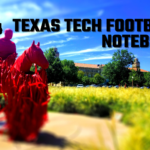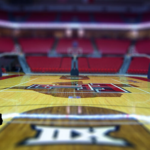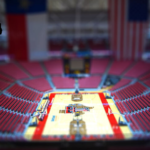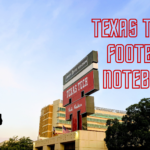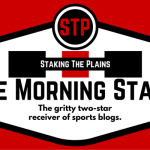Housekeeping
 Youssouf and I will be in Houston this weekend for a basketball tournament. I don’t know how much I’ll post, but I am bringing my laptop. We’re leaving after he gets home from school and hope that any flooding is minimal. We’re staying in the Jersey Village area and playing at the H Town Thunder Gym for the first 2 games.
Youssouf and I will be in Houston this weekend for a basketball tournament. I don’t know how much I’ll post, but I am bringing my laptop. We’re leaving after he gets home from school and hope that any flooding is minimal. We’re staying in the Jersey Village area and playing at the H Town Thunder Gym for the first 2 games.
On the Diamond
 Texas Tech softball hosts No. 1 Texas this weekend for senior weekend and their final conference weekend.
Texas Tech softball hosts No. 1 Texas this weekend for senior weekend and their final conference weekend.
The Red Raiders will finish their regular season with a weekend series against No. 1 Texas beginning on Friday, May 3 at 6 p.m. followed by a 1 p.m. start on Saturday and a 12 p.m. start on Sunday.
Texas Tech (28-17, 8-13) is coming off a series win against Houston last weekend as they won the rubber match on Sunday 5-2 after splitting the first two games. Tech’s RPI now sits at 33 after updating on Wednesday.
The Longhorns (42-6, 20-4) are one of the hottest teams in the country as they will arrive in Lubbock riding a 13-game win streak including three straight series sweeps against Baylor, Kansas and most recently Iowa State. Texas sits comfortably in the No. 1 spot in the RPI and top 25.
 Texas Tech baseball hosts No. 22 Oklahoma for their final homestand of the year.
Texas Tech baseball hosts No. 22 Oklahoma for their final homestand of the year.
GAME ONE:
MATCHUP: Texas Tech (30-17 12-12 Big 12) at Oklahoma (26-17, 15-6 Big 12)
DATE: Friday, May 3, 2024
TIME: 6:30 p.m.
LOCATION: Dan Law Field at Rip Griffin Park (Lubbock, Texas)
PITCHING MATCHUP: LHP Ryan Free (5-0, 4.58 ERA) vs. LHP Braden Davis (5-3, 4.97 ERA)
GAME TWO:
MATCHUP: Texas Tech (30-17 12-12 Big 12) at Oklahoma (26-17, 15-6 Big 12)
DATE: Saturday, May 4, 2024
TIME: 2 p.m.
LOCATION: Dan Law Field at Rip Griffin Park (Lubbock, Texas)
PITCHING MATCHUP: RHP Kyle Robinson (4-5, 4.53 ERA) vs. RHP Kyson Witherspoon (4-3, 4.21 ERA)
GAME THREE:
MATCHUP: Texas Tech (30-17 12-12 Big 12) at Oklahoma (26-17, 15-6 Big 12)
DATE: Sunday, May 5, 2024
TIME: 2 p.m.
LOCATION: Dan Law Field at Rip Griffin Park (Lubbock, Texas)
PITCHING MATCHUP: RHP Mac Heuer (4-4, 6.02 ERA) vs. RHP Brendan Girton (0-1, 5.68 ERA)
On the Court
 Lady Raider basketball and Krista Gerlich have been busy. They signed three new players yesterday, center Maya Peat (6’6″) from Arkansas-Pine Bluff, guard Adlee Blacklock (6’0″) from Oregon State (and she’s from Lubbock, having played at Cooper), and guard Denae Fritz (5’11”) from Baylor.
Lady Raider basketball and Krista Gerlich have been busy. They signed three new players yesterday, center Maya Peat (6’6″) from Arkansas-Pine Bluff, guard Adlee Blacklock (6’0″) from Oregon State (and she’s from Lubbock, having played at Cooper), and guard Denae Fritz (5’11”) from Baylor.
On the Gridiron
 CBS Sports’ Shehan Jeyarajah has overreactions for every Big 12 team (including that Arizona has the best player in the Big 12 and believe that is correct):
CBS Sports’ Shehan Jeyarajah has overreactions for every Big 12 team (including that Arizona has the best player in the Big 12 and believe that is correct):
The offense won’t look very Air Raid-y: Lubbock, Texas, is where the Air Raid became a college football darling, and offensive coordinator Zach Kittley came up in the system. But when running back Tahj Brooks and a hyper-talented tight end room come to campus, don’t expect Kittley to get complacent. Brooks ran for more than 1,500 yards last season and should play an even bigger role running behind twin 270-pound tight ends Mason Tharp and Jalin Conyers. After running out a number of possession-style receivers last year, expect quarterback Behren Morton’s 8.4 average depth of target to jump thanks to a speedy group of receivers. Texas Tech coach Joey McGuire has the distinct advantage of being schematically versatile with his Texas high school coaching background. That’ll be put to full use in Lubbock this fall.
 The news around the new NCAA model sort of makes my head spin. Can’t quite keep track of everything, but did save some links over the past few days. As an aside, I consider Ross Dellenger to be the best beat-writer about the subject, he’s a good follow.
The news around the new NCAA model sort of makes my head spin. Can’t quite keep track of everything, but did save some links over the past few days. As an aside, I consider Ross Dellenger to be the best beat-writer about the subject, he’s a good follow.
ESPN’s Pete thamel and Dan Murphy: NCAA could pay more than $2.7B to settle antitrust suits, sources say
The NCAA’s national office might be footing the bill for a settlement expected to be more than $2.7 billion in the landmark House v. NCAA lawsuit and other related antitrust cases, in hopes of reshaping and stabilizing the college sports industry, according to multiple sources on Thursday.
Sources told ESPN this week that parties have proposed the NCAA’s national office — rather than its individual member schools or conferences — would pay for the settlement of past damages over a period of 10 years. The NCAA payments would be paid to former college athletes who say they were illegally prevented from making money by selling the rights to their name, image and likeness.
Yahoo’s Ross Dellenger: Sources: New college athlete compensation model may cost power schools $300M each over 10 years
The 10-year settlement agreement could cost each power school as much as $300 million over the decade, or $30 million a year. That figure assumes a school meets what is believed to be: (1) a $17-22 million revenue distribution cap for athletes; (2) at least $2 million in withheld NCAA distribution for back damages; and (3) as much as $10 million in additional scholarship costs related to an expansion of sport-specific roster sizes — a concept previously unpublicized.
The $30 million price tag, a startling figure for an industry that has only provided athletes with mostly non-cash resources, is about 20% of the average athletic department budget of public schools in the ACC, Big Ten, SEC and Big 12.
However, as reported earlier this week, the revenue-sharing portion of the new model is “permissive,” meaning schools are not required to reach the cap or share revenue at all. Schools will also have the discretion to expand scholarships, or not, across new roster limits expected to be implemented across all sanctioned sports.
While concepts are murky and questions linger, a framework of a new model is becoming more visible and socialized with high-ranking administrators across the four power conferences.
Yahoo’s Ross Dellenger: What would House v. NCAA settlement mean? A revenue-sharing model to end college amateurism
The settlement would be what several administrators describe as “permissive”: A school does not have to share $20 million with its athletes but the agreement opens the door to give schools the freedom to do so. In a competitive market fueled by the recruiting of high school and college transfers, schools will naturally jockey to offer athletes as much as they can.
Most Group of Five and FCS football programs do not generate a profit, and their athletic departments are often subsidized by university and student fees. There are programs at the G5 level where $20 million in revenue sharing would nearly eclipse their entire department revenue for the year.


